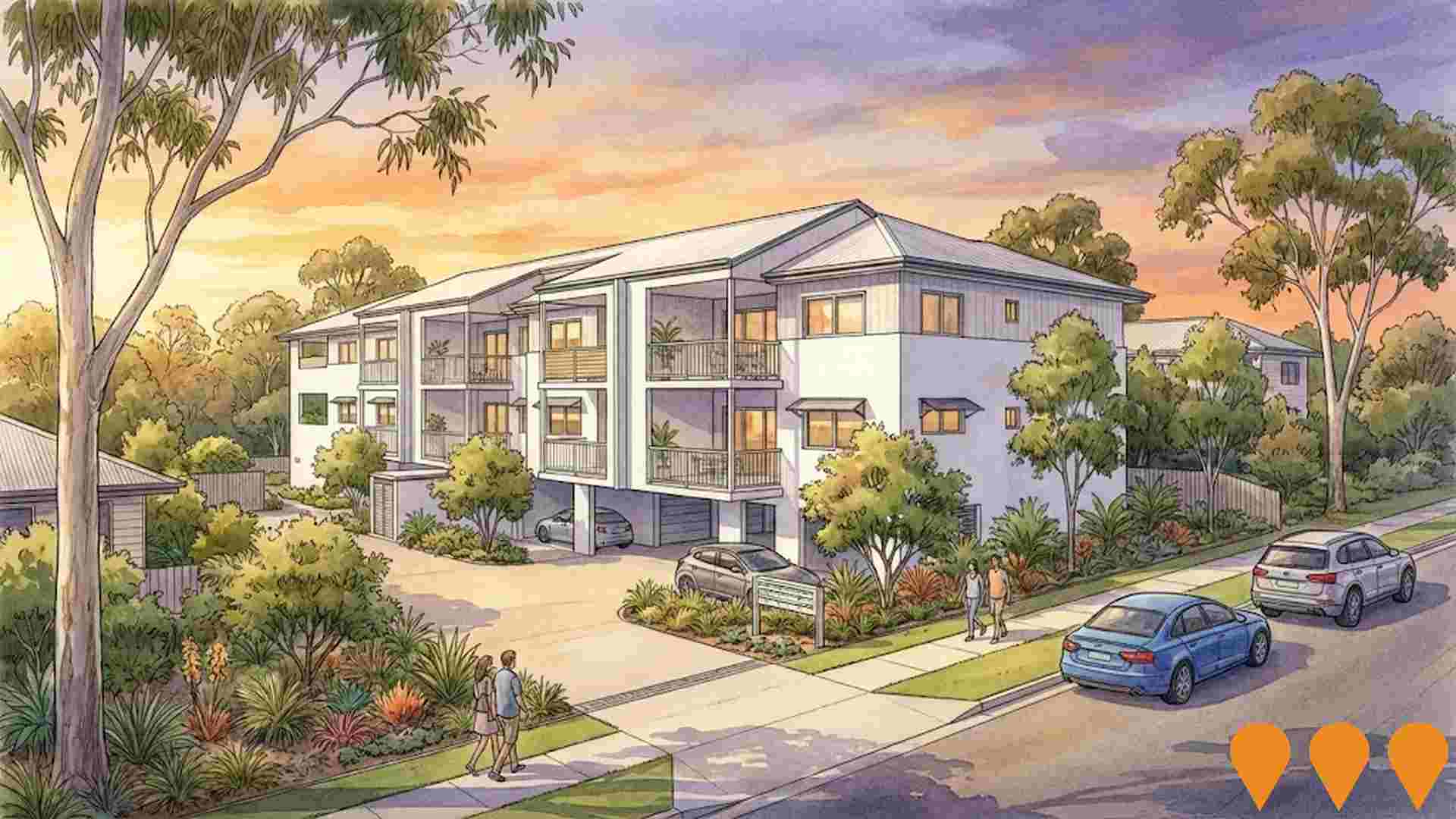Chart Color Schemes
est. as @ -- *
ABS ERP | -- people | --
2021 Census | -- people
Sales Activity
Curious about local property values? Filter the chart to assess the volume and appreciation (including resales) trends and regional comparisons, or scroll to the map below view this information at an individual property level.
Find a Recent Sale
Sales Detail
Population
Grange has seen population growth performance typically on par with national averages when looking at short and medium term trends
Grange's population is 4,926 as of August 2025, reflecting a 299 person increase since the 2021 Census which reported 4,627 people. This growth represents a 6.5% rise from the census figure. The increase is inferred from ABS's estimated resident population of 4,926 in June 2024 and two validated new addresses since the Census date. Grange's population density is 2,752 persons per square kilometer, placing it in the upper quartile compared to national locations assessed by AreaSearch. The area's 6.5% growth since the census is within 2.1 percentage points of the national average (8.6%), indicating competitive growth fundamentals. Overseas migration contributed approximately 65.9% of overall population gains during recent periods, driving primary growth in the area.
AreaSearch adopts ABS/Geoscience Australia projections for each SA2 area released in 2024 with a 2022 base year. For areas not covered by this data and years post-2032, Queensland State Government's SA2 area projections released in 2023 based on 2021 data are adopted. These state projections do not provide age category splits; hence proportional growth weightings in line with ABS Greater Capital Region projections (released in 2023, based on 2022 data) for each age cohort are applied where utilized. Future population trends anticipate lower quartile growth of national statistical areas, with Grange expected to increase by 152 persons to 2041 based on the latest population numbers, reflecting a total increase of 3.1% over the 17 years.
Frequently Asked Questions - Population
Development
Residential development activity is slightly higher than average within Grange when compared nationally
Grange has received approximately 11 dwelling approvals annually over the past five financial years, totalling 57 homes. As of FY26, three approvals have been recorded. On average, each home built between FY21 and FY25 accommodates around 6.1 new residents per year, indicating high demand outstripping supply. New homes are constructed at an average cost of $1,053,000, reflecting a focus on premium properties.
This financial year has seen $1.5 million in commercial approvals, suggesting minimal commercial development activity. Compared to Greater Brisbane, Grange has significantly less development activity, 66.0% below the regional average per person. This scarcity typically strengthens demand and prices for existing properties. The area's development activity is also below national averages, likely due to its maturity and potential planning constraints. Recent building activity consists solely of detached houses, maintaining Grange's suburban character and attracting space-seeking buyers.
Notably, developers are constructing more traditional houses than the current mix suggests, indicating strong demand for family homes despite density pressures. With around 397 people per dwelling approval, Grange exhibits a developed market. Future projections anticipate an addition of 152 residents by 2041, with current construction levels expected to meet housing demand adequately, creating favourable conditions for buyers and potentially enabling growth that exceeds current forecasts.
Frequently Asked Questions - Development
Infrastructure
Grange has moderate levels of nearby infrastructure activity, ranking in the 48thth percentile nationally
Changes to local infrastructure significantly influence an area's performance. AreaSearch has identified nine projects likely impacting the area. Notable projects are Stafford City Shopping Centre Redevelopment, Windsor Dual Tower Development, Brisbane Metro, and Eildon Hill Residences. The following details those most relevant.
Professional plan users can use the search below to filter and access additional projects.
INFRASTRUCTURE SEARCH
 Denotes AI-based impression for illustrative purposes only, not to be taken as definitive under any circumstances. Please follow links and conduct other investigations from the project's source for actual imagery. Developers and project owners wishing us to use original imagery please Contact Us and we will do so.
Denotes AI-based impression for illustrative purposes only, not to be taken as definitive under any circumstances. Please follow links and conduct other investigations from the project's source for actual imagery. Developers and project owners wishing us to use original imagery please Contact Us and we will do so.
Frequently Asked Questions - Infrastructure
Brisbane 2032 Games Infrastructure Program
A $7.1 billion infrastructure program delivering 17 new and upgraded venues for the Brisbane 2032 Olympic and Paralympic Games. The centerpiece is the new 63,000-seat Brisbane Stadium at Victoria Park. Other key projects include the new National Aquatic Centre in Spring Hill, the Brisbane Arena at Roma Street (or updated location), and major upgrades to the Gabba and RNA Showgrounds.

Victoria Park Stadium (Brisbane 2032 Olympic Stadium)
A new 60,000-seat (expandable to 63,000) multi-purpose stadium at Victoria Park/Barrambin to host the Opening and Closing Ceremonies and track & field events for the Brisbane 2032 Olympic and Paralympic Games. Post-Games it will become Queensland's premier rectangular stadium for AFL, cricket and major concerts. The Queensland Government confirmed Victoria Park as the preferred site in March 2025, replacing the earlier Gabba rebuild option. Master planning and environmental impact studies are underway, with an Expression of Interest process for the broader Victoria Park precinct now complete.
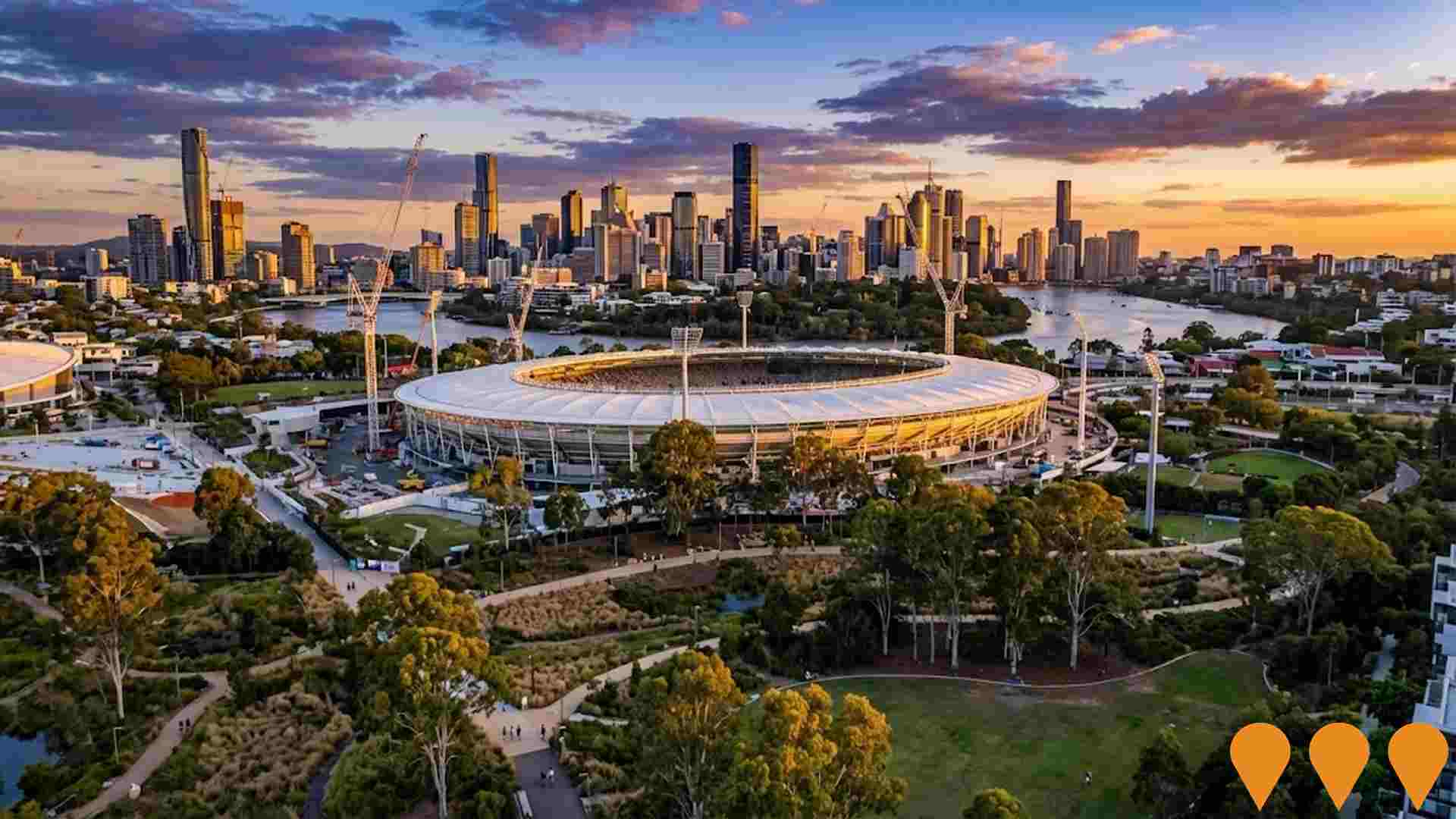
Northern Busway Extension
$444 million busway extension featuring dedicated bus lanes and stations including prominent Lutwyche Station. Provides rapid transit connection from Lutwyche area to Brisbane CBD and northern suburbs, significantly improving public transport accessibility.
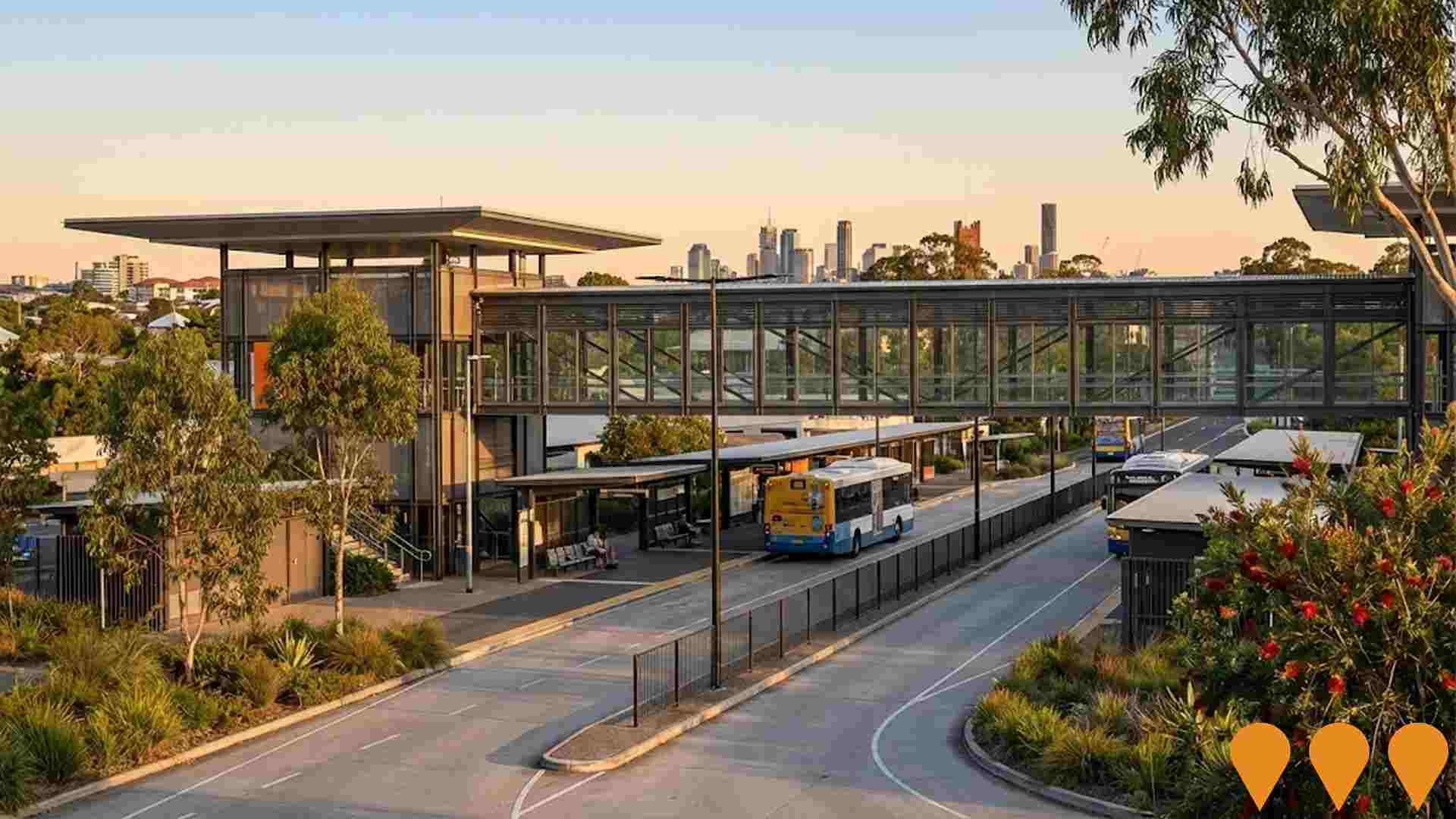
Cross River Rail
A new 10.2 km rail line with 5.9 km of twin tunnels under the Brisbane River and CBD, delivering four new underground stations (Boggo Road, Woolloongabba, Albert Street, and Roma Street). The project also includes a new above-ground station at **Exhibition**, and the rebuild of seven suburban stations between **Dutton Park** and Salisbury. Associated works include three new stations on the Gold Coast line (Pimpama, Hope Island, and Merrimac), new stabling facilities, and installation of a new world-class signalling system. The project is currently in **construction** with various works underway at multiple sites across South East Queensland. It is being delivered in partnership with the private sector through three major packages: Tunnel, Stations and Development (TSD); Rail, Integration and Systems (RIS) and European Train Control System (ETCS) contracts.
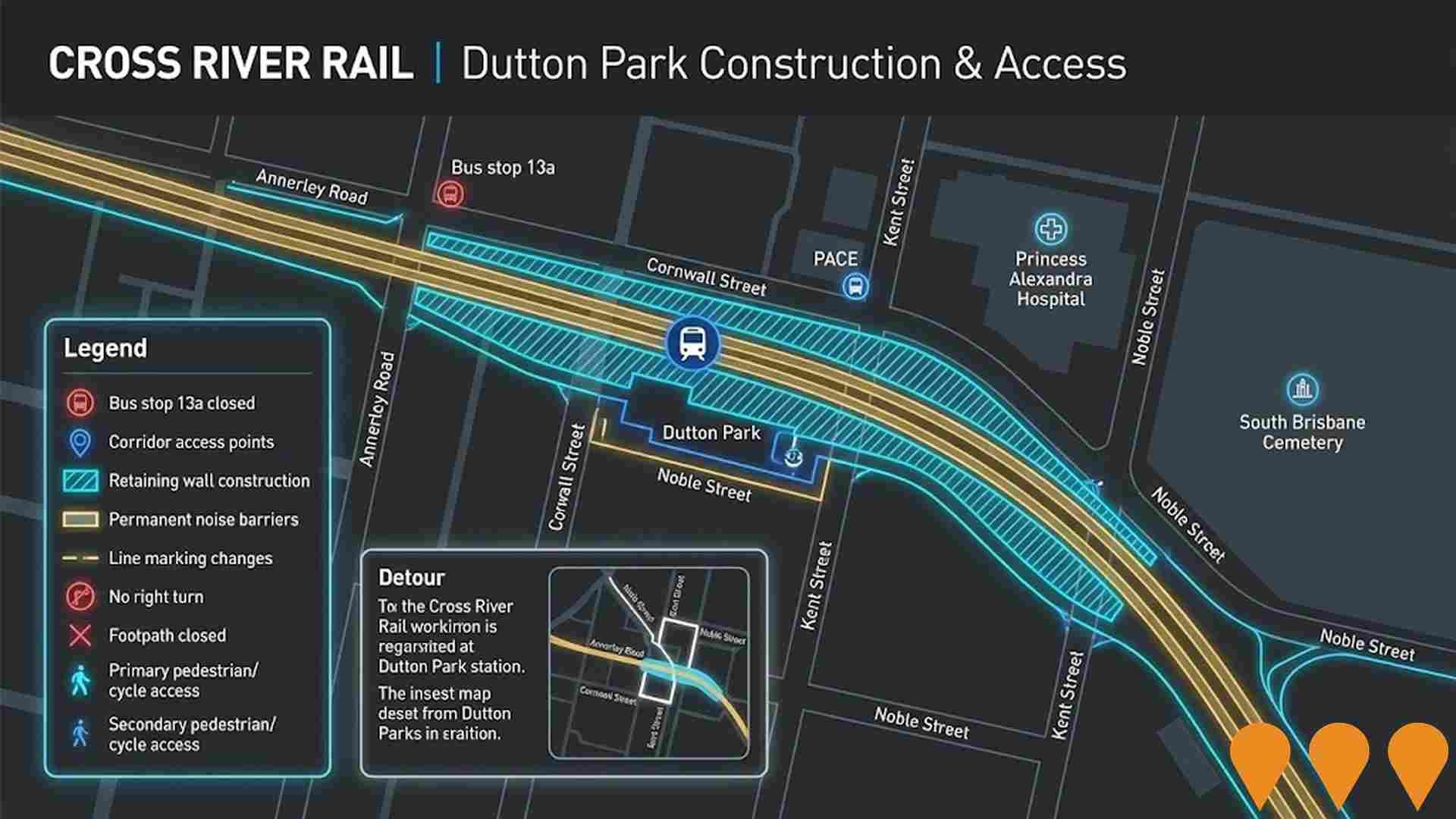
Stafford City Shopping Centre Redevelopment
Major $150M+ redevelopment and expansion of Stafford City Shopping Centre, which was approved under DA/A006123456. The project includes a new full-line Coles, expanded Aldi, additional specialty retail, a dining precinct, and improved parking and access.
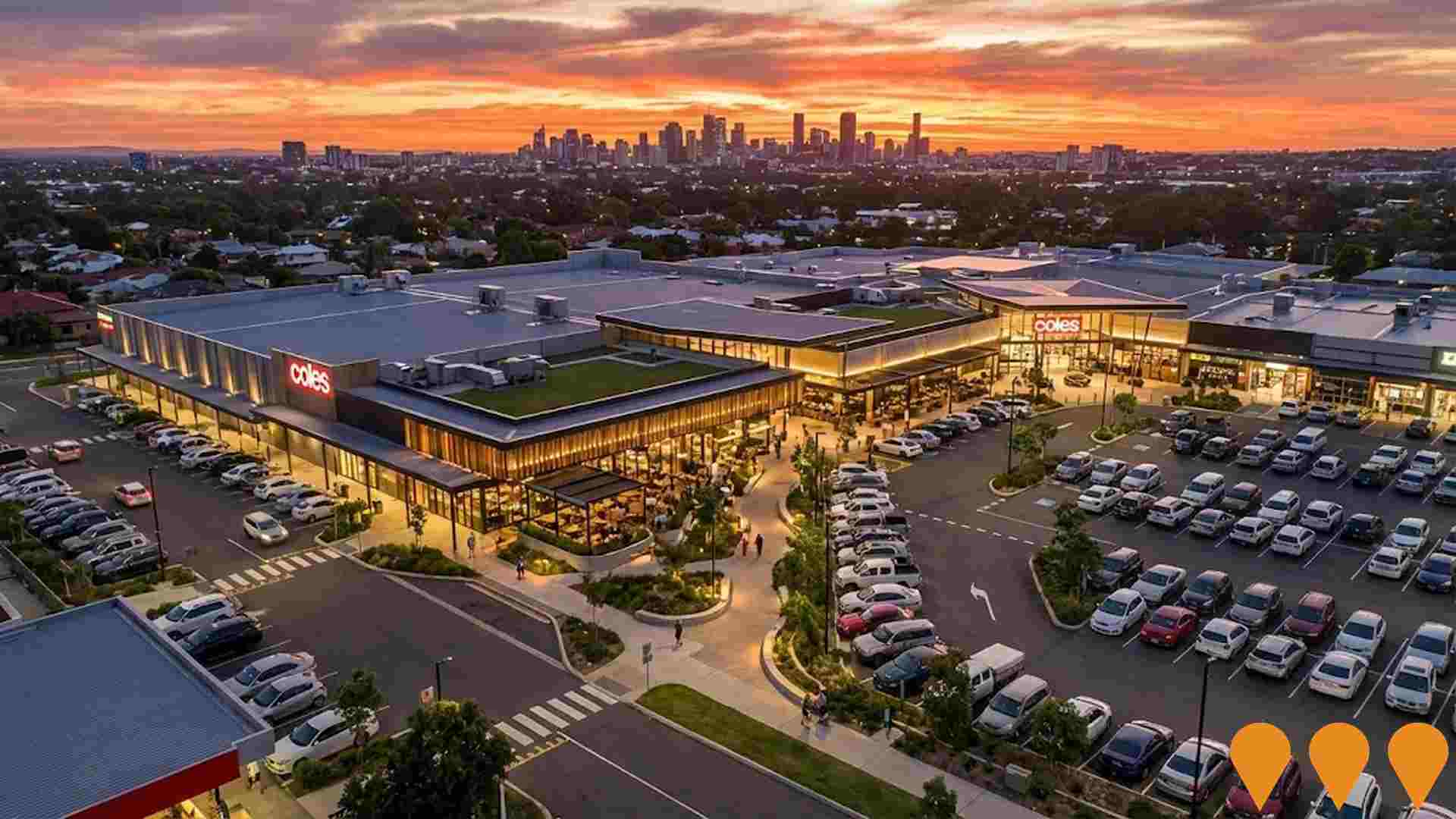
Brisbane Metro
High-capacity electric bus rapid transit system along 21km of existing busway. Operates two routes: M1 (Eight Mile Plains to Roma Street) and M2 (UQ Lakes to Royal Brisbane and Women's Hospital). Features 60 trackless metro vehicles, 18 stations, a new Adelaide Street tunnel, and high-frequency, 24-hour weekend services. Fully operational as of late 2025.
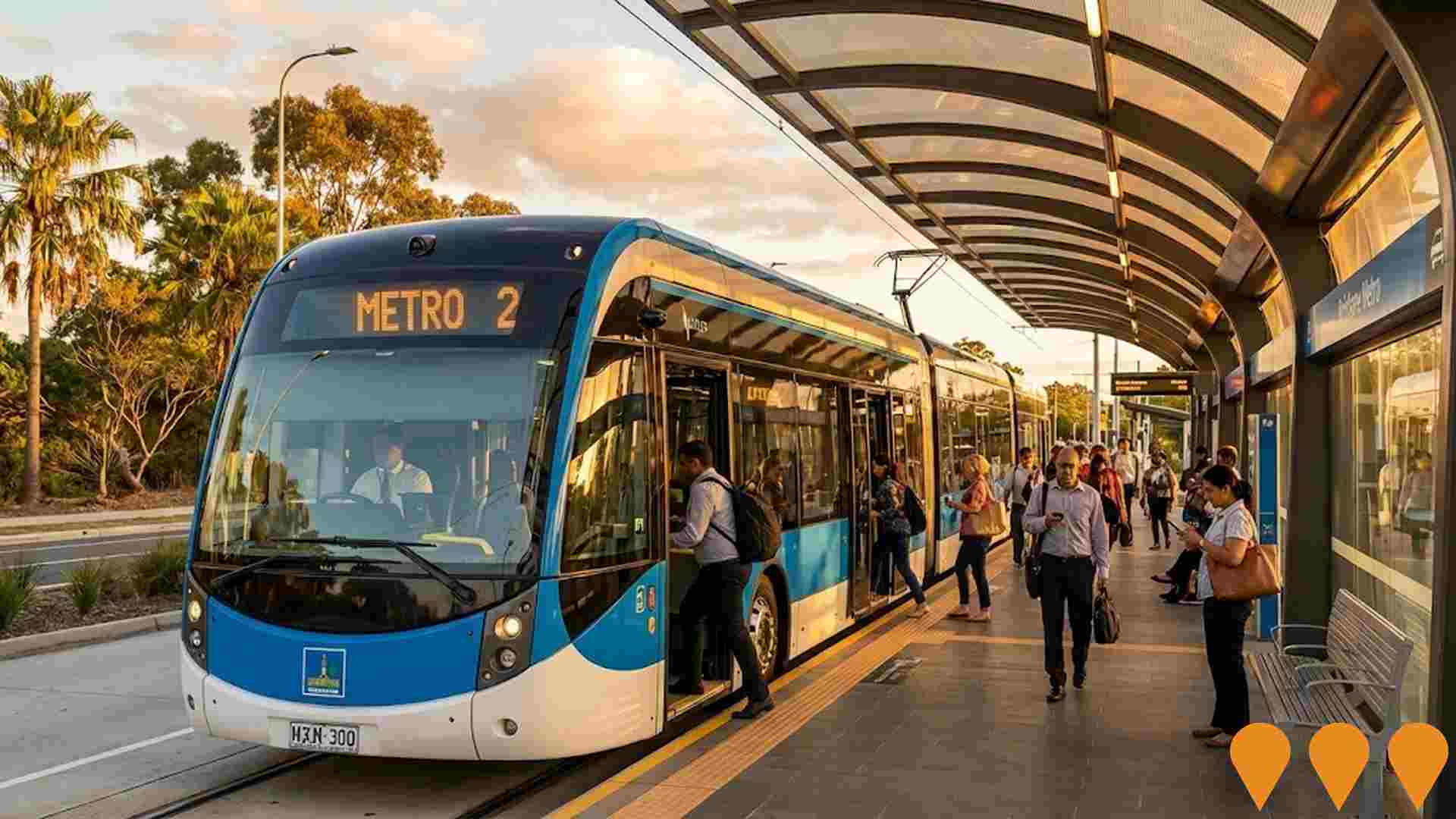
MONARC Mixed-Use Precinct
A 10,000 square metre mixed-use destination precinct at 768 Stafford Road, developed by Rogerscorp in collaboration with Woolworths. The project includes medical facilities, retail spaces, childcare, residential components and a healthcare super clinic serving Defence Force and Emergency Services.
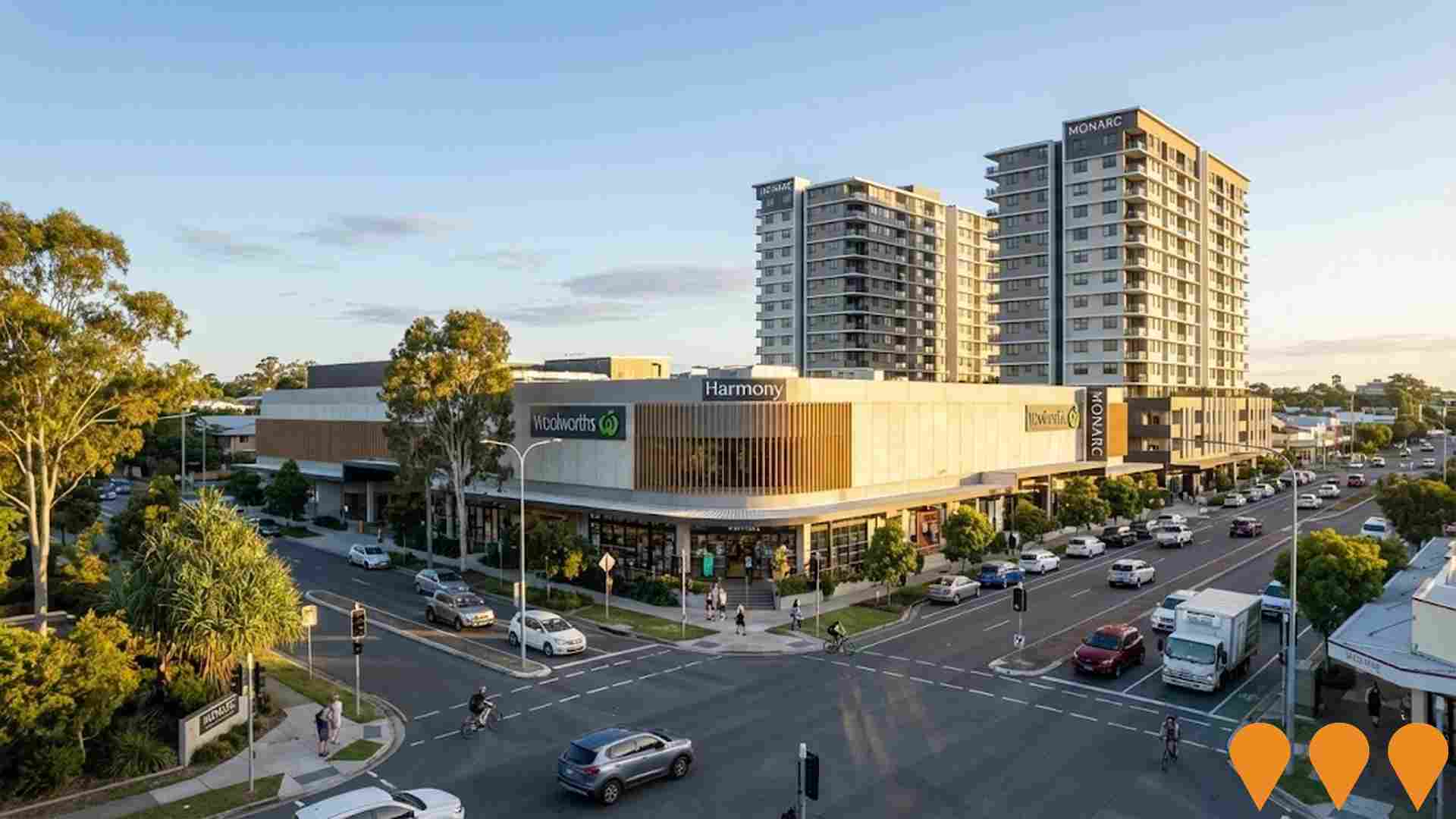
Stafford Central Mixed-Use Development
Proposed vibrant mixed-use precinct featuring residential apartments, a retail podium, childcare centre, medical centre, and a public plaza directly opposite Stafford City Shopping Centre. A development application (A006240292) for this project was lodged with the Brisbane City Council by Mirvac in late 2022.

Employment
AreaSearch analysis of employment trends sees Grange performing better than 90% of local markets assessed across Australia
Grange has an educated workforce with strong professional services representation. The unemployment rate was 1.3% in the past year, with estimated employment growth of 3.4%.
As of June 2025, 3,083 residents are employed, with an unemployment rate of 2.8%, below Greater Brisbane's 4.1%. Workforce participation is high at 76.3% compared to Greater Brisbane's 64.5%. Key employment industries include health care & social assistance, professional & technical services, and education & training. Professional & technical services have notable concentration, with levels at 1.7 times the regional average.
Retail trade shows lower representation at 6.1% versus the regional average of 9.4%. Employment opportunities locally may be limited as indicated by Census working population vs resident population counts. Over the year to June 2025, employment increased by 3.4%, labour force grew by 2.9%, reducing unemployment by 0.5 percentage points. In contrast, Greater Brisbane saw employment rise by 4.4% and unemployment fall by 0.4%. National employment forecasts from Jobs and Skills Australia (May 2025) project national growth of 6.6% over five years and 13.7% over ten years. Applying these projections to Grange's employment mix suggests local growth of approximately 7.4% over five years and 15.0% over ten years, though these are simple extrapolations for illustrative purposes only.
Frequently Asked Questions - Employment
Income
The economic profile demonstrates exceptional strength, placing the area among the top 10% nationally based on comprehensive AreaSearch income analysis
AreaSearch's aggregation of ATO data for financial year 2022 shows Grange had a median taxpayer income of $76,945 and an average income of $115,788. Nationally, these figures are exceptionally high compared to Greater Brisbane's median of $55,645 and average of $70,520. Based on Wage Price Index growth from financial year 2022 to September 2025 (an estimated increase of 13.99%), current estimates for Grange would be approximately $87,710 median and $131,987 average income. The 2021 Census data ranks household, family, and personal incomes in Grange between the 95th and 99th percentiles nationally. Income distribution shows 39.3% of locals (1,935 people) earn more than $4,000 annually, differing from broader area trends where the $1,500 - $2,999 category is predominant at 33.3%. Economic strength is evident with 53.3% of households earning over $3,000 weekly, supporting high consumer spending. After housing costs, residents retain 88.2% of income, indicating strong purchasing power. The area's SEIFA income ranking places it in the 10th decile.
Frequently Asked Questions - Income
Housing
Grange is characterized by a predominantly suburban housing profile, with above-average rates of outright home ownership
The dwelling structure in Grange, as per the latest Census, consisted of 80.7% houses and 19.3% other dwellings such as semi-detached properties, apartments, and 'other' dwellings. This is compared to Brisbane metropolitan area's figures of 36.5% houses and 63.6% other dwellings. Home ownership in Grange stood at 30.3%, with mortgaged dwellings at 43.8% and rented ones at 25.8%. The median monthly mortgage repayment in the area was $2,600, higher than Brisbane metro's average of $2,167. The median weekly rent figure for Grange was recorded as $460, compared to Brisbane metro's $410. Nationally, Grange's mortgage repayments were significantly higher than the Australian average of $1,863, while rents were substantially above the national figure of $375.
Frequently Asked Questions - Housing
Household Composition
Grange features high concentrations of family households, with a higher-than-average median household size
Family households comprise 78.3% of all households, including 46.9% couples with children, 22.5% couples without children, and 8.0% single parent families. Non-family households constitute the remaining 21.7%, with lone person households at 18.4% and group households comprising 3.6%. The median household size is 2.9 people, which is larger than the Greater Brisbane average of 2.2.
Frequently Asked Questions - Households
Local Schools & Education
Grange demonstrates exceptional educational outcomes, ranking among the top 5% of areas nationally based on AreaSearch's comprehensive analysis of qualification and performance metrics
Educational attainment in Grange is notably high, with 52.3% of residents aged 15 and above holding university qualifications. This compares to 25.7% in Queensland (QLD) and 30.4% nationally. Bachelor degrees are the most common at 33.1%, followed by postgraduate qualifications at 12.8% and graduate diplomas at 6.4%. Vocational pathways account for 21.5% of qualifications among those aged 15 and above, with advanced diplomas at 9.4% and certificates at 12.1%.
Educational participation is high, with 34.8% of residents currently enrolled in formal education, including 12.9% in primary education, 9.9% in secondary education, and 7.4% pursuing tertiary education. The area has two schools serving 1,401 students: Wilston State School and St Columba's Primary School. Educational performance is high (ICSEA: 1165), placing local schools among the most advantaged nationally. Both schools focus exclusively on primary education, with secondary options available in surrounding areas. Grange functions as an education hub, with 28.4 school places per 100 residents, significantly above the regional average of 13.7, attracting students from nearby communities.
Frequently Asked Questions - Education
Schools Detail
Nearby Services & Amenities
Transport
Transport servicing is moderate compared to other areas nationally based on assessment of service frequency, route connectivity and accessibility
Grange has 28 active public transport stops, all of which are bus stops. These stops are served by six different routes that together facilitate 678 weekly passenger trips. The accessibility of these services is rated as excellent, with residents typically located just 197 meters from the nearest stop.
On average, there are 96 trips per day across all routes, resulting in approximately 24 weekly trips per individual stop.
Frequently Asked Questions - Transport
Transport Stops Detail
Health
Grange's residents boast exceedingly positive health performance metrics with younger cohorts in particular seeing very low prevalence of common health conditions
Health outcomes data shows excellent results across Grange, with younger cohorts experiencing particularly low prevalence of common health conditions. Approximately 79% of the total population (3,886 people) have private health cover, compared to 71.3% in Greater Brisbane and a national average of 55.3%. Mental health issues and asthma are the most prevalent medical conditions, affecting 7.7% and 7.1% of residents respectively.
A total of 76.1% of residents report no medical ailments, compared to 73.7% in Greater Brisbane. Grange has 10.8% of residents aged 65 and over (531 people), lower than the 12.2% in Greater Brisbane. While health outcomes among seniors are above average, they require more attention than the broader population.
Frequently Asked Questions - Health
Cultural Diversity
Grange ranks below the Australian average when compared to other local markets across a number of language and cultural background related metrics
Grange's population was found to be predominantly Australian-born, with 82.5% born in Australia, and mostly citizens, at 91.9%. English was the primary language spoken at home by 92.0% of residents. Christianity was the predominant religion, practiced by 53.6% of Grange's population.
Notably, Judaism was present in 0.2%, slightly higher than the regional average of 0.2%. In terms of ancestry, English (29.3%) and Australian (25.9%) were the most represented groups, with Irish following at 12.8%. Some ethnic groups showed notable differences: Scottish residents made up 9.0% compared to 8.7% regionally, Welsh residents were at 0.7%, matching the regional average, and South African residents constituted 0.6%, slightly higher than the regional average of 0.5%.
Frequently Asked Questions - Diversity
Age
Grange's population is slightly younger than the national pattern
Grange's median age is nearly 37 years, close to Greater Brisbane's average of 36 and Australia's median of 38. Compared to Greater Brisbane, Grange has a higher percentage of residents aged 5-14 (17.0%) but fewer residents aged 25-34 (9.1%). Between the 2021 Census and now, the population aged 15-24 has grown from 12.7% to 14.6%, while the 55-64 age group increased from 9.9% to 11.5%. Conversely, the 0-4 cohort declined from 6.1% to 4.8%, and the 5-14 group dropped from 18.0% to 17.0%. By 2041, demographic modeling projects significant changes in Grange's age profile. The 75-84 cohort is expected to grow by 70%, adding 126 residents to reach 309. Residents aged 65 and above will drive 55% of population growth, indicating demographic aging trends. Meanwhile, the 0-4 and 25-34 cohorts are projected to experience population declines.

